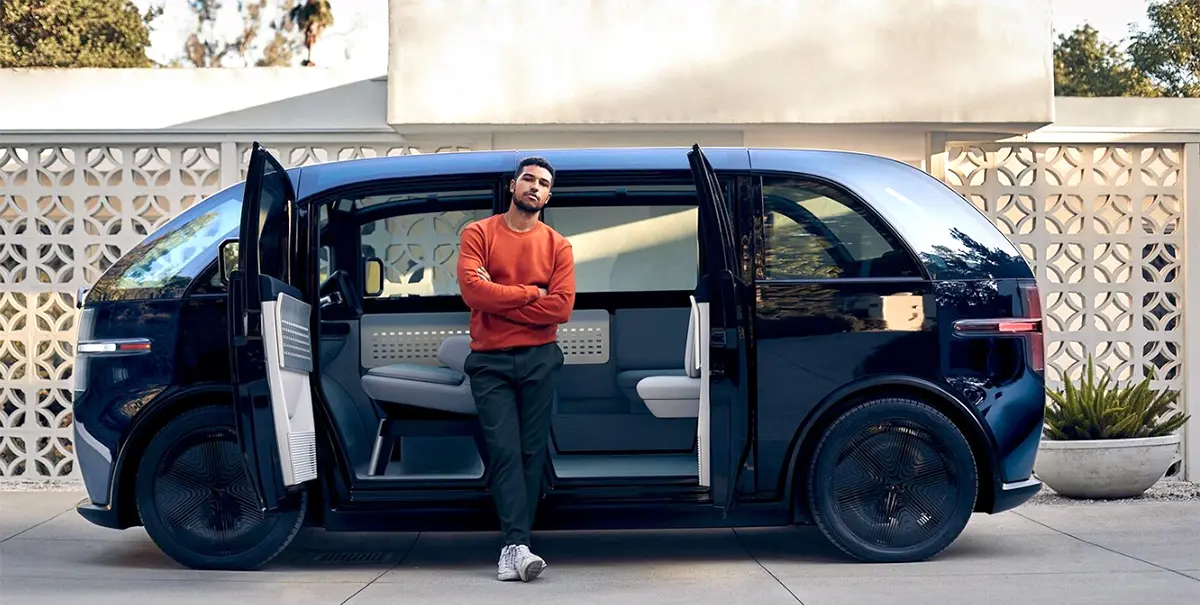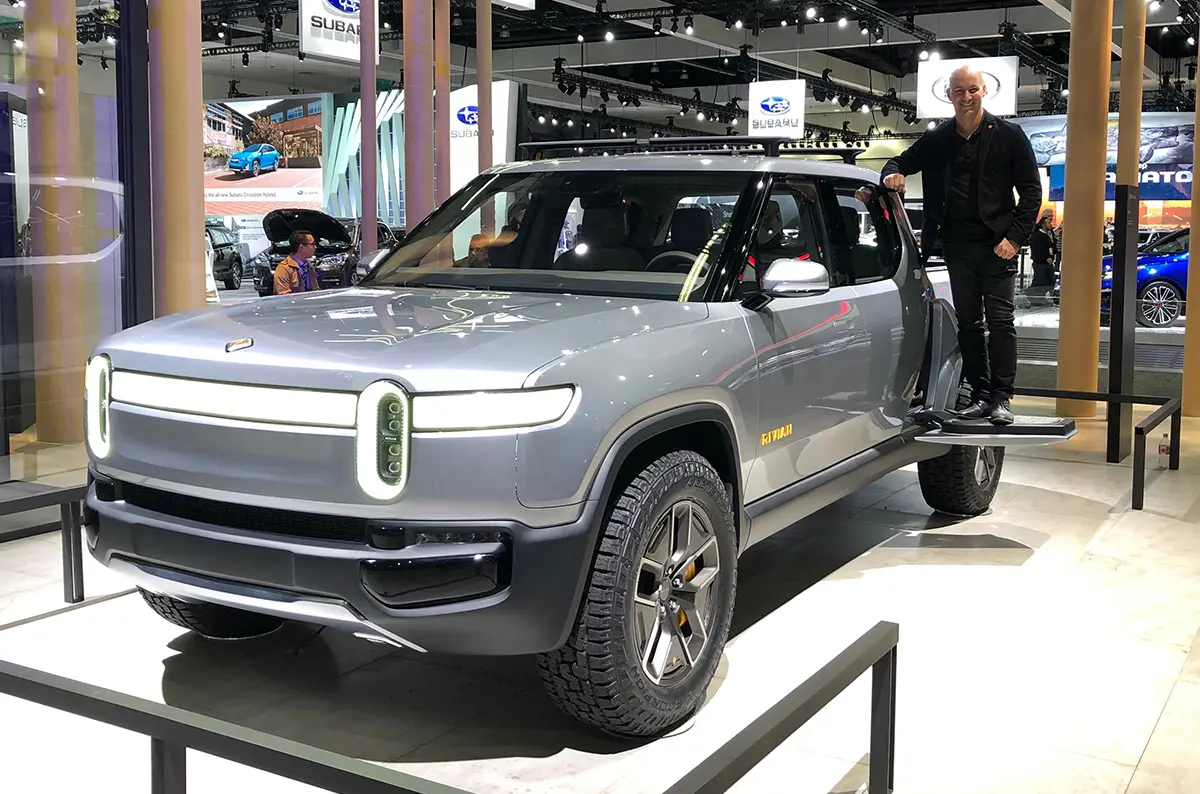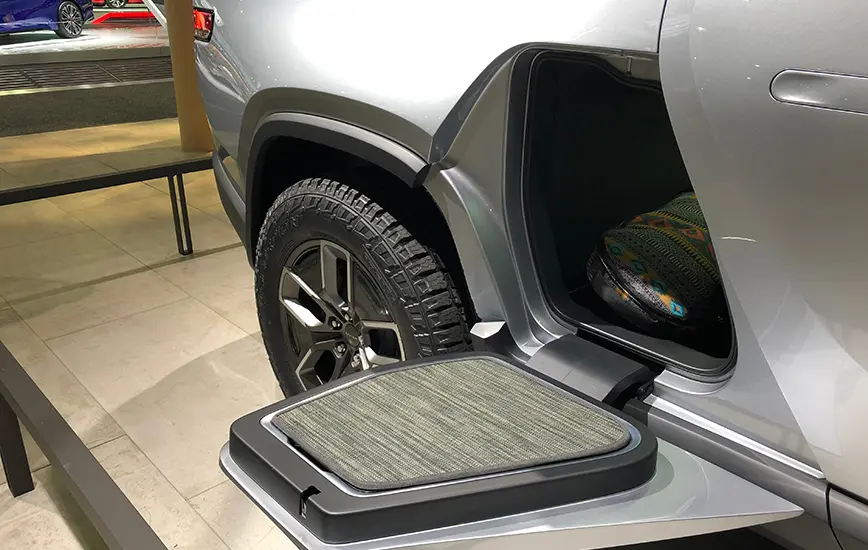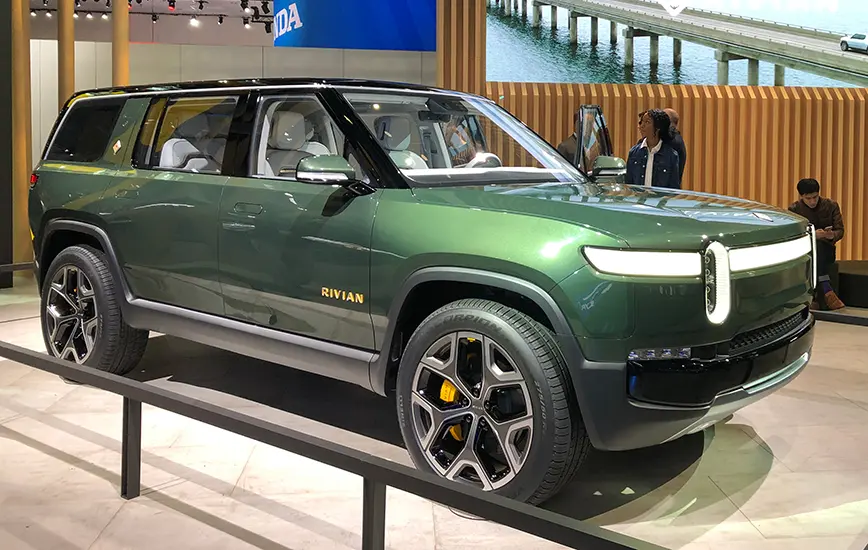Flat platform allows for a little or a lot, maybe even a kitchen
The flexibility of being able to design an electric vehicle on a flat skateboard, unencumbered by the space needed for the mechanics of a combustion engine has created an “anti-car” approach for two EV companies who have taken this freedom in two opposite directions. The design choices illustrate just how diametrically opposed two segments of the market can be.
For Canoo, less is more. Based in Los Angeles, this electric vehicle resembles a small van and will only be available by subscription with a target launch of 2021. This vehicle is for those who don’t want to own a car, they are only interested in its function, with boxes to check such as if it’s easy to drive in the city and is it simple to maintain? Considering all the services and products now offered on a subscription-basis – think Netflix, pet food and meal prep boxes – for this consumer, owning for the moment is OK.
Richard Kim, Head of Design explained the team envisioned creating a minimal, loft-type space that is both functional and affordable. “It’s like an empty rented apartment that you move your own things into,” he said. You pick the interior seating and finishes like you would your own furniture. And there are no screens in this vehicle, because you bring your own. “This is the ultimate user experience where you bring your own smartphone because it has all your personal information and preferences on it; that is the screen you already know how to use, and the one you trust,” explained Kim. There is an instrument panel of sorts that houses a cluster of lights and a Bluetooth link to your phone that you operate with voice commands.
The design is so minimalist, Kim said they don’t even call it that anymore, they call it Zen. This approach is also evident on the exterior, for example, try finding a logo. “There’s no functional benefit of having a logo so it wasn’t included. The designers believed that the shape of the vehicle was iconic enough, you’d recognize it from a distance.”
The headlights are also very Zen, just three lines of an uncompleted cross. “That was the minimum we needed to meet safety standards, so that’s all that was included,” said Kim.
Canoo will offer their customers a variety of “rooms” to put on the skateboard platform, depending on the situation, such as a commuter vehicle, a family vehicle or a commercial vehicle for a small business. “Same sausage, different sizes,” joked Kim.
At the opposite end of the design spectrum is Rivian with their R1T Truck and R1S SUV, set for production in 2020. These vehicles are for those who not only want to own a vehicle, they need it to support their adventurous lifestyle with all the conveniences to truly go off-road and off-grid.
Like Kim’s explanation, Jeff Hammoud, Head of Design for Rivian also used the analogy of designing the vehicle as you would your home. “We used premium materials up top and more functional ones below. For example, there are no black floor mats. Would you put black flooring in your home? Of course not because it shows all the dirt.” The fabric used inside is similar to outdoor furniture fabric for durability. And all the vents in the vehicle were designed to disappear. “You wouldn’t want to showcase the HVAC system in your home, why do it in your car?”
Rivan’s Truck features one of the best uses of previously dead space with the addition of a gear tunnel that runs the width of the vehicle located behind the seats and in front of the truck bed. This clever storage offers contained space for smaller items, with fold down doors to stand on to easily reach the roof or into the truck bed. There is even an optional camp kitchen that can be stored in the tunnel, and then slide out for the ultimate convenience. Hammoud said they recently used it at an employee event and made meals for 40 people. No word on who did the dishes.
It’s clear that absolutely every detail was thoughtfully considered. The roof rack was reinvented to be more aerodynamic with an easy click-in and out feature and can be stored in the gear tunnel, of course. There is a built-in air compressor, and a camera on the back spoiler so you can keep an eye on your gear if you’re not near the vehicle. They even created a Rivian flashlight. The key fob acts as a carabiner to clip on a belt loop or a backpack further reinforcing the adventure brand.
Hammoud said that he’s looking forward to the advancements in autonomy when you can park then head out on a long hike and your vehicle will drive itself to the end of the trail to pick you up.
Although designing for very diverse target markets is nothing new, the freedom to create an extremely individualized space without the typical mechanical constraints is a fresh opportunity for the EV companies to flex their creativity, and for the consumer to be able to find the exact mobility solution to fit their lifestyle.
Our architexture studio in North America is also flexing their creativity, working on both of these unique vehicles to design the textures and finishes.








